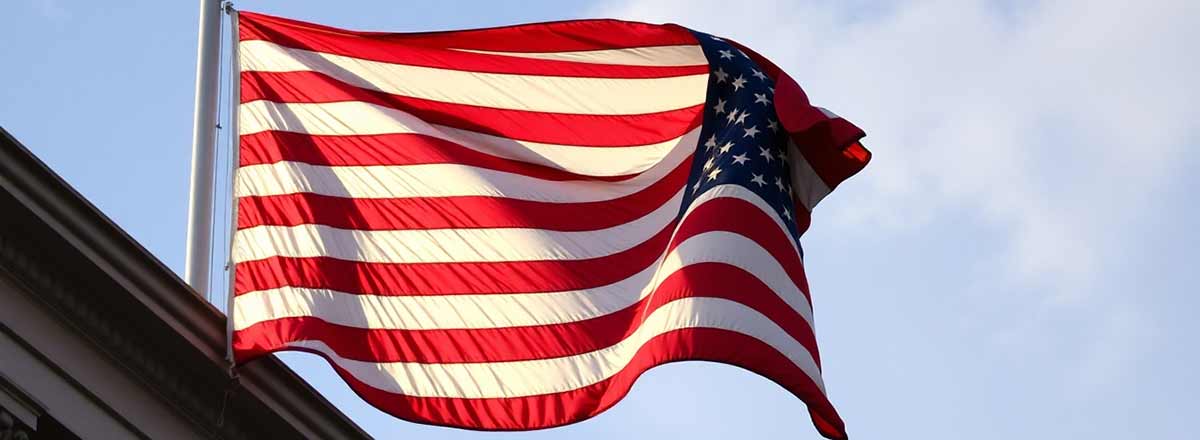
No one knows for certain where the stars and stripes design came from. Popular accounts of the history of the American flag state that Betsy Ross of Philadelphia designed it. In fact, Ross sewed one of the oldest versions of the flag. There’s no evidence she designed it.
Early History
The US flag has been altered 26 times since its inception. The first official flag recognized by historians is the Grand Union flag which came out on January 1, 1776. It consisted of 13 stripes (alternately white and red). The British Union Jack was situated on the upper left. It was in May of that year that Ross sewed the flag.
A year later on June 14, 1777 the US Congress decreed that the flag have 13 stripes with 13 stars. Based on the history of the American flag, it was this design that Capt. Rob Gray used when he sailed in 1787. In 1795 two stars and stripes were added as Kentucky and Vermont became part of the Union.
The 1800s
In 1818, the number of stars increased to 20 as more territories became part of the US. However it was decided that the stripes would be kept at 13 for the 13 original states. A year later Illinois joined the US. The 1800s would see more and more territories join the country. By the time California joined, the number of stars had risen to 31.
A study of the history of the American flag shows that when the Civil War broke out, the number of stars remained the same. Under orders from President Lincoln, the stars indicating all the states were still part of the flag.
By 1890, the stars increased to 43 with Washington, North Dakota and South Dakota joining in. The records show that laws concerning flag desecration came into being in the late 1890s.
The 1900s
In 1912 New Mexico and Arizona became part of the United States and increased the number of stars to 48. In 1942 President Franklin Roosevelt approved a measure called the Federal Flag Code. It contained the guidelines on how to properly display and show courtesy to the American flag.
A poignant point in the history of the American flag took place in 1945 when the flag that was at Pearl Harbor was brought to the US capitol after Japan surrendered. A year later the Supreme Court came out with a decision stating that kids could not be forced to salute the flag.
In 1959 one more star was added as Alaska became part of the US. The next year in 1960, Hawaii became the 50th star on the flag.
Another milestone took place in 1969 when an American astronaut Neil Armstrong left the flag on the Moon. Throughout the 1960s and even today, there have been cases of people brought to court for desecrating the flag, but there is no actual punishment for people who do it.
The history of the American flag has gone through various changes, and not without controversy. But the meaning of the flag, justice, freedom and truth always remain.
Smithsonian National Museum of American History – The Star-Spangled Banner
https://americanhistory.si.edu/star-spangled-banner
U.S. Department of Veterans Affairs – History of the American Flag
https://www.va.gov/opa/publications/celebrate/flag.pdf